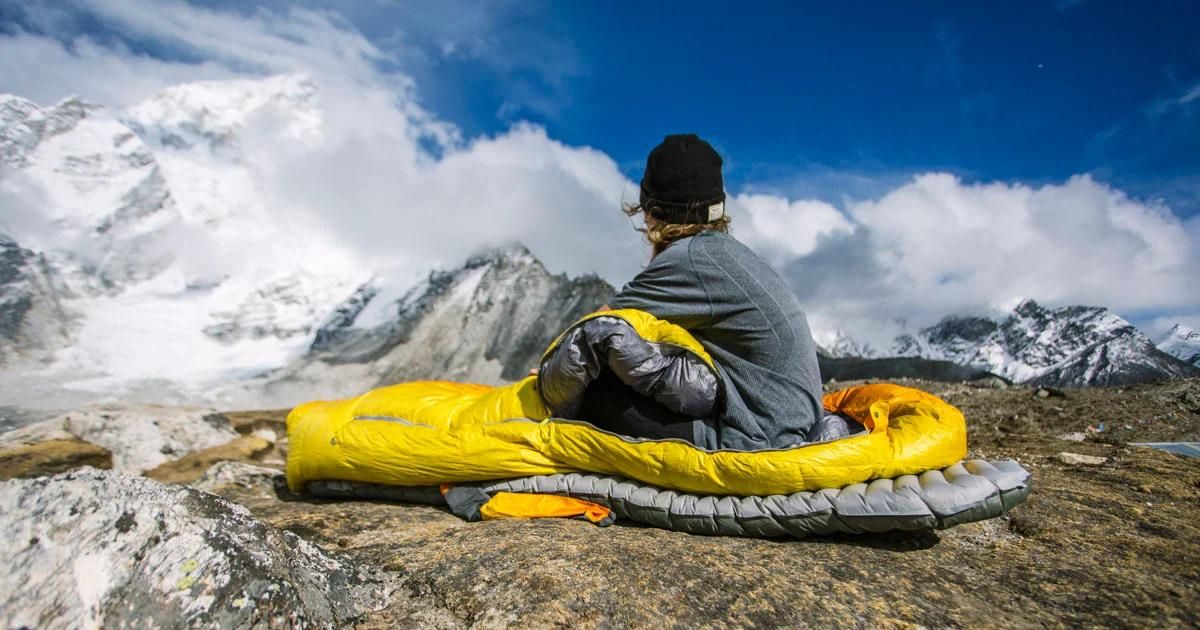
Choosing the right sleeping bag is super important for a cozy night’s sleep during your outdoor adventures. Whether you’re camping, backpacking, or on a big expedition, picking the perfect sleeping bag helps you stay warm, dry, and well-rested. In this guide, we’ll cover everything you need to know about choosing the best sleeping bag, and we’ll show you some of the most popular options that people love.
1. Purpose and Type of Sleeping Bag
First, think about why you need the sleeping bag. Are you going on a backpacking trip where you’ll need to carry everything? Or are you camping near your car where space and weight don’t matter as much? Here are the main types of sleeping bags:
- Backpacking Sleeping Bags: Light and easy to pack, perfect for when you need to carry them a long way.
- Camping Sleeping Bags: Heavier but much more comfortable for car camping.
- Expedition Sleeping Bags: Made for very cold places like snowy mountains.
REI Co-op Magma 15 Sleeping Bag
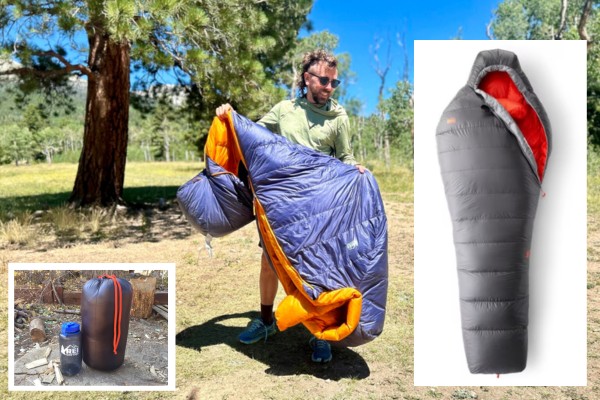
You can use the REI Co-op Magma 15 Sleeping Bag when you’re backpacking or hiking because it’s lightweight and easy to pack. It’s great for spring, summer, and fall camping since it keeps you warm down to 15°F (-9°C). If you’re camping in the mountains or in cold weather, this bag will keep you cozy without adding extra weight. It’s also perfect for multi-day trips, where you need something light and compact but still warm. Just avoid using it in extreme winter conditions, as it’s designed for moderate cold.
2. Temperature Rating
Sleeping bags have a temperature rating that shows the lowest temperature where the bag will keep you warm. Here’s what you should know:
- Summer Bags: Good for warm nights, usually rated for 35°F (1°C) and higher.
- 3-Season Bags: Great for spring, summer, and fall, with ratings from 10°F to 35°F (-12°C to 1°C).
- Winter Bags: Made for cold winter nights, rated for 10°F (-12°C) and below.
Kelty Cosmic 20 Degree Down Sleeping Bag
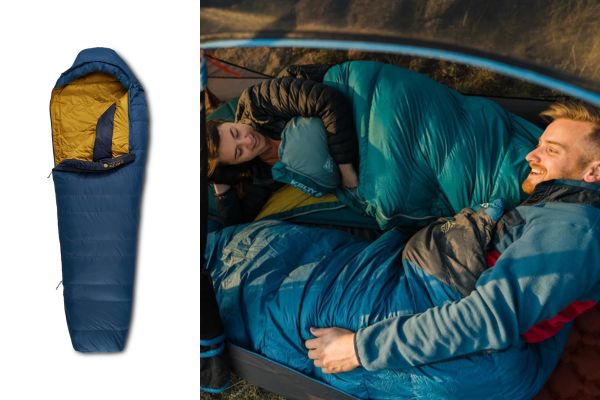
The Kelty Cosmic 20 Degree Down Sleeping Bag works well for 3-season camping in spring, summer, and fall, keeping you warm in temperatures as low as 20°F (-6°C). It’s a great option for backpacking, as it’s lightweight and compresses easily for packing. On chilly nights, its down insulation provides plenty of warmth. Whether you’re on a short camping trip or a longer hike, it offers comfort without too much bulk. However, it’s not suited for extreme winter conditions, so stick to using it in moderate climates.
3. Insulation Type
Sleeping bags use two main types of insulation to keep you warm: down and synthetic.
- Down Insulation: Super light and packs down small, but can lose warmth if it gets wet.
- Synthetic Insulation: Man-made, stays warm when wet but usually bulkier.
Nemo Disco 15 Sleeping Bag
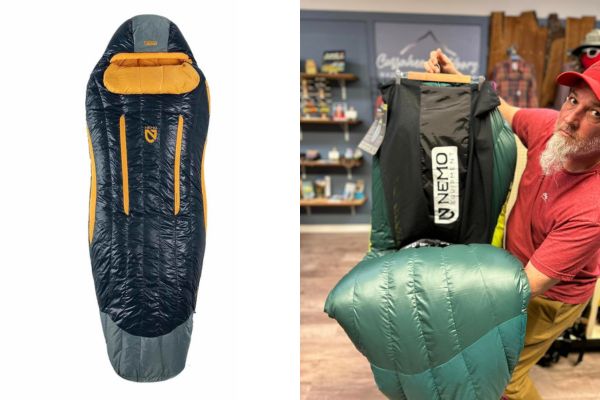
The Nemo Disco 15 Sleeping Bag is perfect for side sleepers who want extra room to move around, thanks to its spoon-shaped design. It’s great for 3-season camping and can keep you warm in temperatures down to 15°F (-9°C). Ideal for backpacking, it offers excellent warmth without being too heavy or bulky. The bag is designed to stay cozy during cool nights while allowing for ventilation if you need to cool down. It’s a top choice for those who value both comfort and warmth on their camping trips, but it’s not meant for harsh winter conditions.
Coleman Brazos Cold Weather Sleeping Bag
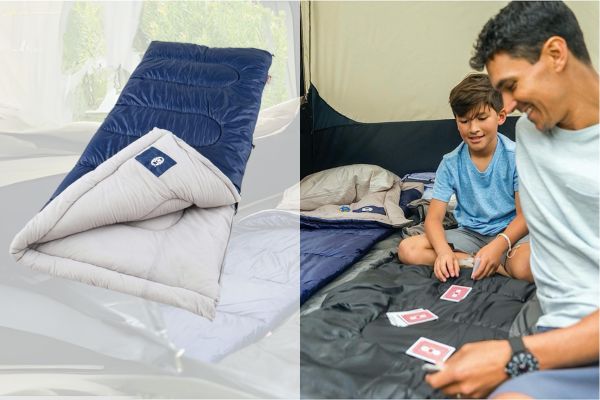
The Coleman Brazos Cold Weather Sleeping Bag is a solid choice for budget-friendly camping in cooler temperatures, handling weather down to 20°F (-6°C). It’s best for car camping or short trips where weight isn’t a big concern since it’s a bit bulkier. The synthetic insulation keeps you warm, even in damp conditions, making it reliable for cold, wet weather. While not ideal for backpacking due to its size, it’s perfect for casual campers looking for warmth and durability at an affordable price. Just avoid extreme cold, as it’s made for moderate chilly nights.
4. Shape and Size
Sleeping bags come in different shapes to fit how you sleep:
- Mummy Bags: Snug and tight, best for cold conditions.
- Rectangular Bags: Roomier, great for warm weather or if you need space.
- Semi-Rectangular: A mix between mummy and rectangular, giving warmth and some extra room.
Teton Sports Celsius XXL Sleeping Bag
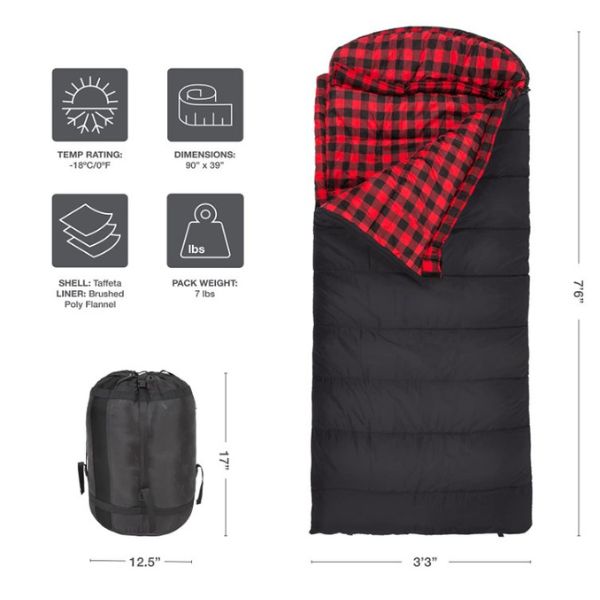
The Teton Sports Celsius XXL Sleeping Bag is great for car camping or cold-weather camping where comfort is key. It’s spacious, making it ideal for people who need extra room to move while sleeping. This bag keeps you warm in temperatures as low as 0°F (-18°C), so it’s perfect for chilly nights. Its durable build and soft flannel lining add extra coziness. Although it’s too bulky for backpacking, it’s a top choice for campers who prioritize comfort over portability. Just pack it for trips where weight isn’t an issue, and enjoy the warmth and space it offers.
5. Weight and Packability
When backpacking, every ounce matters! You want a sleeping bag that’s lightweight and easy to pack into your backpack.
When shopping for a sleeping bag, pay attention to the warmth-to-weight ratio. This measures how much warmth the sleeping bag provides compared to its weight. Down insulation generally has a higher warmth-to-weight ratio, making it a favorite among backpackers.
Features to Consider
Here are some extra features that make a sleeping bag more comfortable and easier to use:
- Zippers: Look for zippers that don’t snag so you can get in and out easily.
- Hood: A hood helps keep your head warm, which is great for cold nights.
- Draft Collars and Tubes: These stop heat from escaping around the neck and zipper areas.
- Ventilation: Bags with vents or two-way zippers let you cool down when it’s warm.
Shell and Lining Material
Two important factors for your sleeping bag are the shell and lining materials:
- Water-Resistant Shell: Keeps water out, helping you stay dry even in damp conditions.
- Soft Lining: The inner lining should be comfortable to the touch, making it more pleasant to sleep in.
Fit and Comfort
Make sure your sleeping bag is the right size for you. Too small, and you’ll feel squished; too big, and it won’t keep you as warm. Some bags also come in extra-wide versions if you like more room.
Price and Brand Reputation
Think about your budget. It’s often worth spending a little more on a sleeping bag that will last and keep you comfortable. Trusted brands like Teton Sports, REI Co-op, Nemo, Coleman, and Kelty are known for making good-quality sleeping bags.
Conclusion
When picking a sleeping bag, it’s all about knowing what you need for your trip. If you’re after premium performance, The North Face and REI Co-op are favorites among serious backpackers and mountaineers because of their quality and durability. For those on a budget or just camping for fun, Teton Sports, Kelty, and Coleman have some great, affordable options. If comfort is a priority, especially for side sleepers, Nemo really shines with its innovative designs. Whether you’re looking for something lightweight like the REI Co-op Magma 15 for backpacking, the roomy Teton Sports Celsius XXL for camping, or the cozy Nemo Disco 15, there’s a perfect fit for everyone. Take your time, think about what matters most to you, and pick a bag that will help you enjoy a great night’s sleep under the stars!